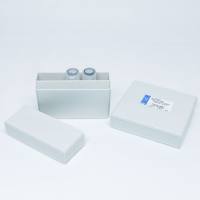Technology of Patch- Clamp Electrodes
互联网
540
The extracellular patch voltage clamp technique has allowed the currents through single ionic channels to be studied from a wide variety of cells. In its early form (Neher and Sakmann, 1976), the resolution of this technique was limited by the relatively low (∽50 MΩ) resistances that isolated the interior of the pipet from the bath. The high resolution that presently can be achieved with the patch-clamp technique originated with the discovery (Neher, 1981) that very high-resistance (tens or even hundreds of GΩ) seals can form between the cell membrane and the tip of a clean pipet when gentle suction is applied to the pipet interior. Although the precise mechanisms involved in this membrane-to-glass seal are still not fully understood, the importance of the GΩ seal is obvious. The high resistance of the seal ensures that almost all of the current from the membrane patch flows into the pipet and to the input of the current-sensitive headstage preamplifier. It also allows the small patch of membrane to be voltage-clamped rapidly and accurately via the pipet, and the mechanical stability of the seal is vital to the whole-cell voltage clamp technique.






